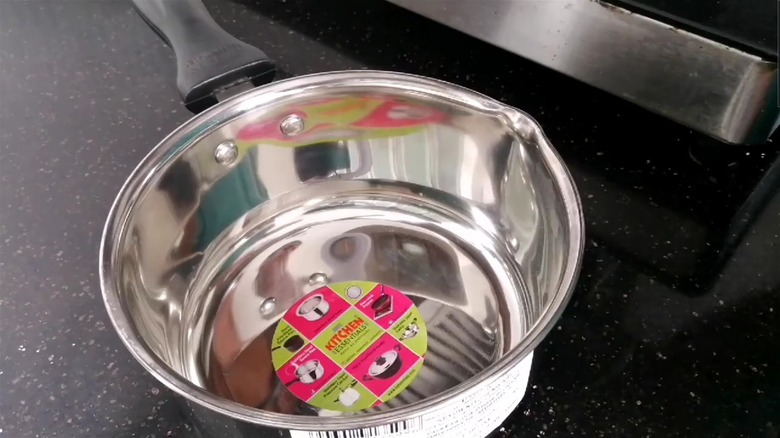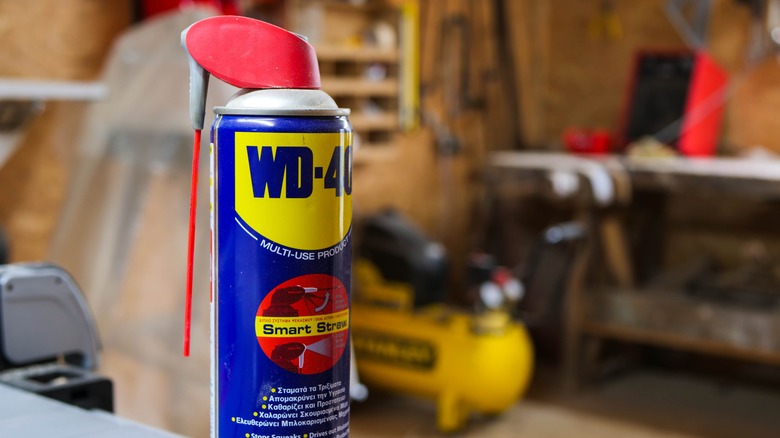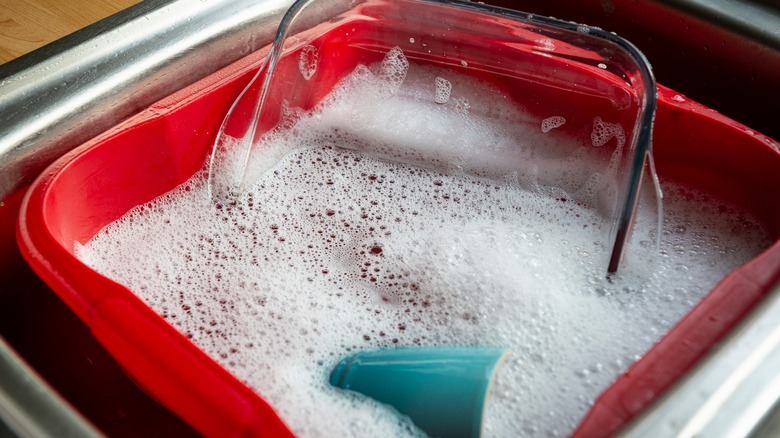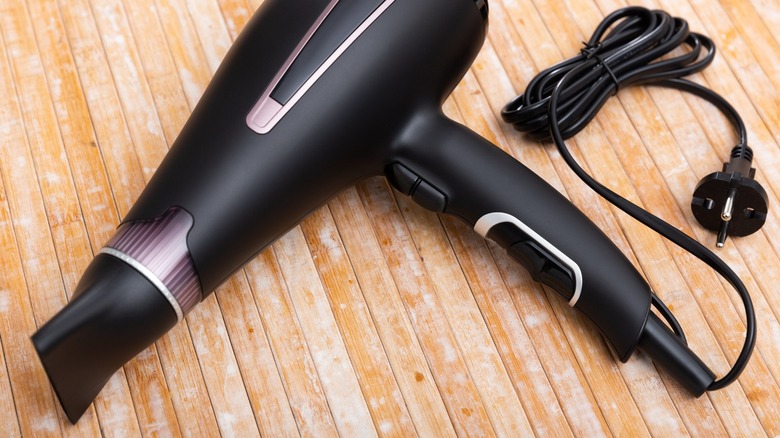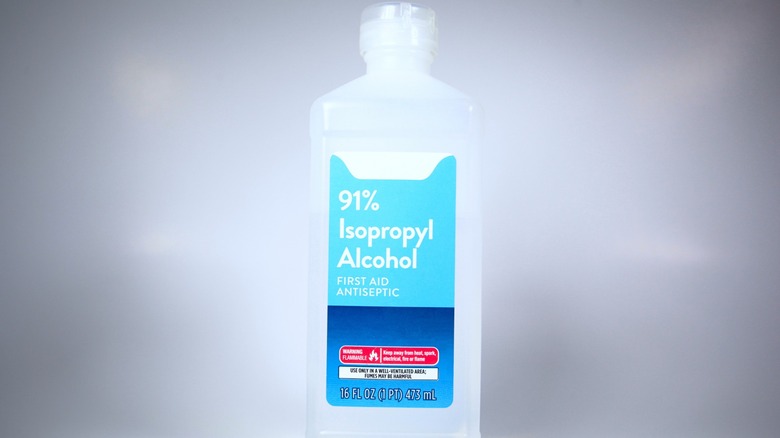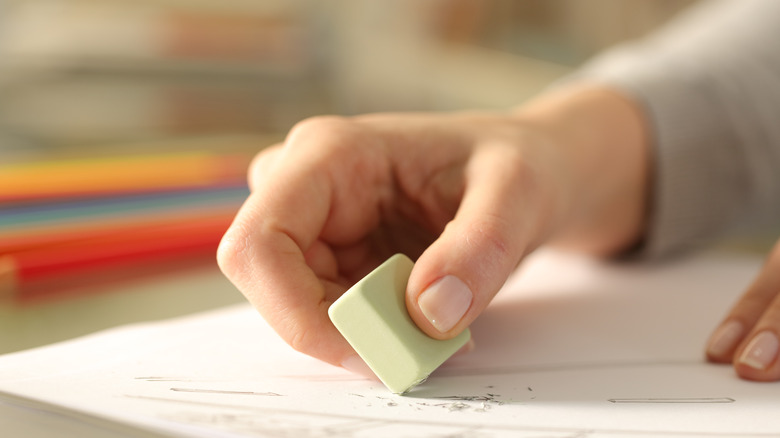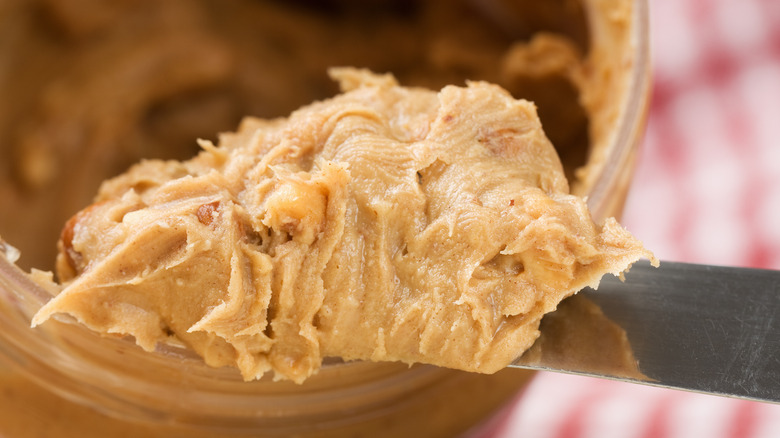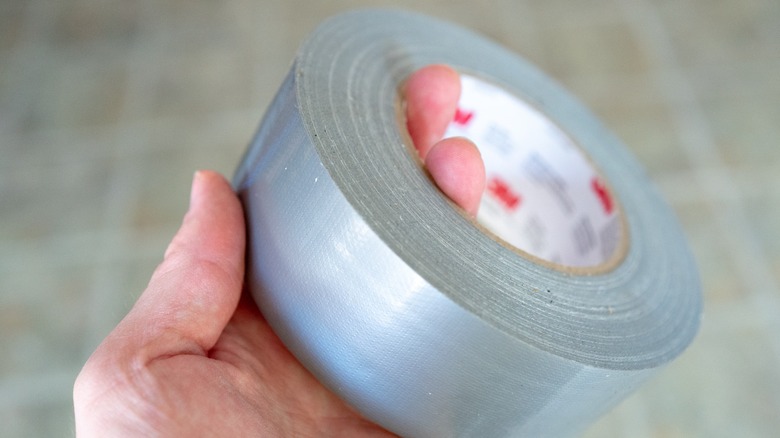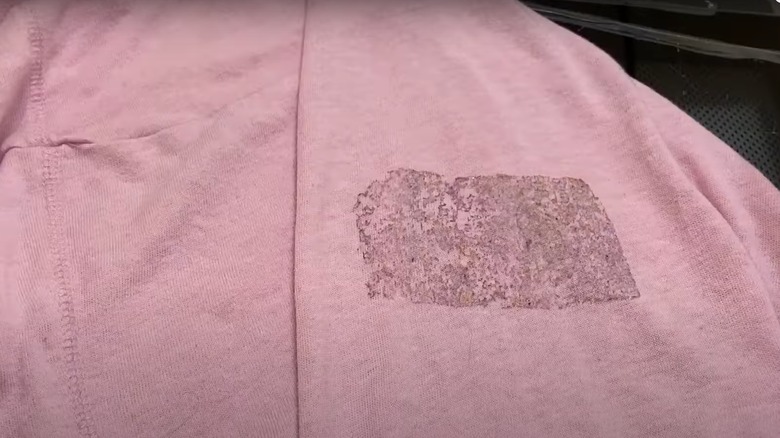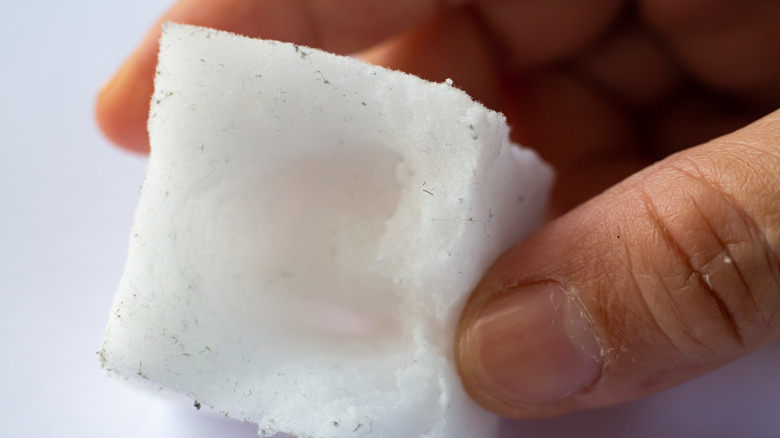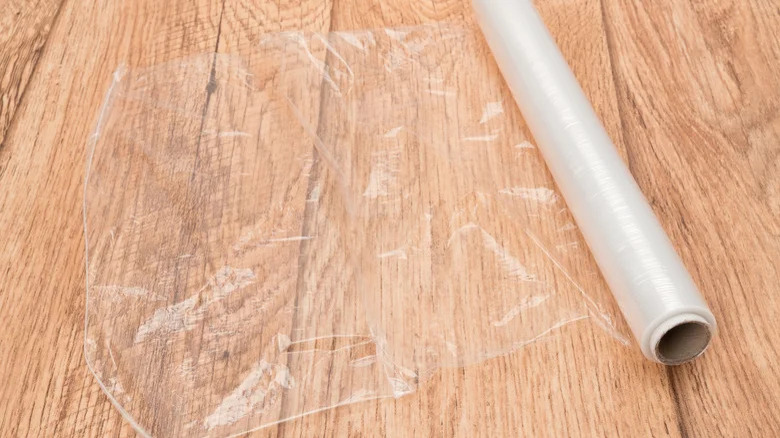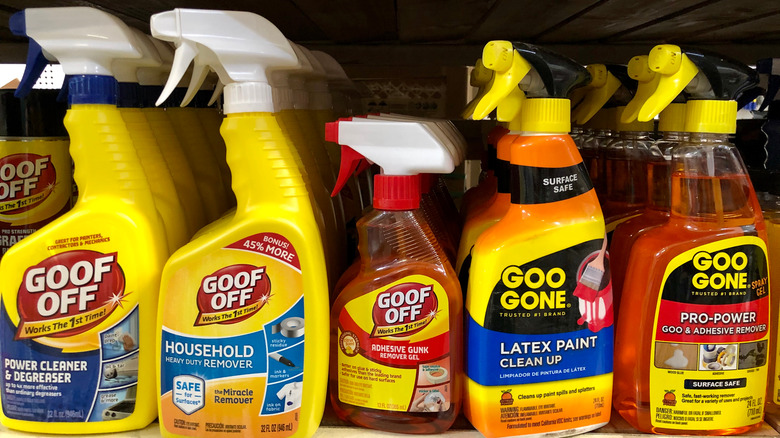11 Hacks To Help You Remove Those Pesky Price Tag Stickers
We may receive a commission on purchases made from links.
Have you ever peeled off a price tag sticker only to look down and realize that there is a lot of sticky residue left behind? Trying to remove the leftover glue typically doesn't go well, and you're left with an unattractive and sticky spot on your new item. Picking at the residue with your fingernails is tedious and typically doesn't work, making the whole situation even more frustrating.
Before you give up and decide to accept the tacky spot that will inevitably pick up dust and other debris, read through the hacks shared below. These ideas can help you remove price tag stickers from various surfaces. Before you get started, just remember that all of these hacks are not intended for use with all materials. Some will be better suited for certain types of surfaces and may even cause damage to others. If in doubt, err on the side of caution and perform a spot test on an inconspicuous area of the item before proceeding. Here are all the different ways to remove those annoying stickers!
Spray it with WD-40
You probably already know that WD-40 can help you fix a squeaky hinge. However, this is just one of the many ways to use it. One of the other ways it can help around the house is to remove sticker residue. WD-40 is a lubricant. When sprayed on a sticker or the residue left behind from one, it will work to loosen the adhesive's bond, making it easier to remove.
If you're going to try using WD-40, you'll want to start by removing as much of the sticker as possible using your fingers or a scraper. Then, cover the affected area with WD-40, and let it sit for at least 15 to 20 minutes. As the WD-40 sits over the adhesive, the lubricant will release the bond. After about 15 minutes, you'll be able to wipe away the rest of the sticker residue with ease.
Soak it in hot, soapy water
Sometimes, the best way to remove a price tag sticker will be to soak it in hot and soapy water. Clearly, this hack will not work for any items that are too bulky to soak in the sink or bathtub, or those made of wood or other materials that should not be submerged under water. However, for price tag sticker residue stuck on something made of glass or plastic, this hack offers one of the simplest solutions for your problem.
Like some of the other solutions we've discussed, the warm and soapy water will soften the sticker and any remaining adhesive. As the glue softens, its bonds will loosen. Give the item at least 15 or 20 minutes to soak, then remove it from the water and use a scraper or the scrubbing side of a sponge to get rid of anything that is still stuck to it.
Use a hair dryer to loosen the adhesive
The next time you have a stubborn sticker that doesn't want to come off, reach for your hair dryer. Set it to the hottest setting and hold it above the sticker — about 1.5 to 2 inches away. Slowly move the blow-dryer back and forth over the residue for about one minute (sometimes it could take closer to two). After a minute, turn the hair dryer off and try to peel the sticker off. It should peel off much more easily — without leaving any annoying tacky residue behind.
This hack works so well because the hot air from the blow-dryer effectively melts the adhesive. You can try this approach with any type of sticker on many different surfaces, including plastic, glass, and ceramic. While it may also work for price tags on wooden items, you might want to think twice before trying it. The hot air could cause damage to the wood, so you're probably best trying a different method instead.
Scrub it with rubbing alcohol
Rubbing alcohol, also called isopropyl alcohol, can also come in handy when trying to remove a pesky residue. After peeling off as much of the sticker as possible, dampen the remainder using a wet microfiber towel. Then, you'll want to rub some of the isopropyl alcohol directly over the residue. You can use a cotton swab, sponge, or rag for this task, based on the affected area's size. Rub back and forth several times to make sure that the sticker becomes saturated with the alcohol. After 30 seconds or so, the alcohol should begin breaking down the residue. Once this happens, you should be able to easily wipe it away and rinse the alcohol off of your item.
The reason rubbing alcohol can be so effective at removing sticker residue is because the glue becomes soluble in alcohol. When the glue from the sticker becomes saturated with the isopropyl alcohol, it dissolves. If you don't have any rubbing alcohol, rubbing the sticker with vodka can yield the same results.
Erase it away
A standard eraser can also help you remove the tacky residue left behind from a price tag sticker. Rubbing the eraser back and forth over the little bits of the adhesive will create friction. This friction will help release the glue from the object, leaving the surface much cleaner than it started. Depending on the size of the sticker, you might find that using a larger eraser will work better than using one attached to the end of a pencil.
After removing as much residue from the item as possible, you may still need to wipe the surface down with some water. Just keep in mind that this hack will work best when you use some elbow grease. Some surfaces may get damaged by the rubber eraser forcefully going back and forth over them, so exercise caution when trying this approach. It may be best to test it on an inconspicuous spot first, if possible.
Cover it with peanut butter
This hack might sound strange, but hear us out. Peanut butter can actually help remove sticker residue too. The reason it can be so effective is because of the peanut oil in it. If the oil is able to penetrate the sticker and saturate the adhesive, it can break it down and allow you to remove it with ease. If you want to try using peanut butter, you'll want to place a coat of it over the sticker. Leave it to sit for at least five minutes. Then, use a paper towel or a sponge to wipe the peanut butter and the residue off of the items.
Peanut butter can be used on many different surfaces, including glass, plastic, and wood. However, there are some caveats to keep in mind before you use this hack. Since it's heavy with oil, it might not be the best thing to use on white laminate or painted furniture. If left on for too long, a light yellow stain might be left behind.
Use duct tape to pull it off
It may seem counterintuitive, but you can remove sticky residue using something else that is sticky. To pull up the last bits of a price tag sticker, try using some duct tape. Wrap the tape around two fingers, sticky side out. Then, use your fingers to repeatedly press the tape against the residue. As you repeat this process, sticker bits should start coming onto the tape. You might need to rotate the tape or replace it with a new piece as it gets covered with the sticker pieces.
While duct tape can be effective on many surfaces, such as plastic or glass, it will not always be the best method to use. The adhesive on duct tape is very strong, and it could end up pulling the finish off of wood or painted surfaces. It will also be too strong to use on paper or cardboard, so don't attempt to remove a price tag sticker from a book using this method.
Freeze clothing with sticker residue on it
Sometimes, price tag stickers are placed directly on an article of clothing. Oftentimes, these stickers peel off easily. However, sometimes the stickers' adhesive is too strong, and they don't come off so cleanly. This can be especially true if you forget to remove the tag before washing the new item.
Fortunately, getting sticker residue off of clothing is easier than you may think. If you put the clothing item in the freezer for about an hour, it will cause the glue from the sticker to harden. Once it does, it will be much easier to remove using just a microfiber towel and some dish soap. After scrubbing the glue, let the item soak in warm water for about half an hour before leaving it to air dry. This hack can also be a real lifesaver if you have young children who frequently forget to remove stickers from their clothes before tossing them in the hamper.
Wipe it off with a Magic Eraser
That Mr. Clean Magic Eraser you may have in your kitchen, bathroom, or laundry room could also help you get rid of the tacky and sticky mess left behind by a price tag. Start by getting the Magic Eraser wet and squeezing out any excess water. Then, with a firm grip on the sponge, rub it back and forth over the sticker. Each pass will loosen the stuck-on bits, eventually fully releasing them from your item.
If you have one, try an Extra Durable Magic Eraser, as it will hold up better when facing the glue from the sticker. Keep in mind that these sponges are not suitable for use on all surfaces. You should avoid trying this method to remove stickers from wood, stainless steel, polished or brushed fixtures, nonstick cookware, or high gloss surfaces. That's because the sponge acts as ultra-fine sandpaper, and lightly sands the stain away. If you're unsure if the Magic Eraser will damage a particular item, start by testing it in an inconspicuous spot first.
Use plastic wrap
Believe it or not, an ordinary piece of plastic wrap (like what you use to cover a bowl or plate of leftovers) can help you remove a price tag sticker. However, you won't be using the plastic wrap alone; think of it as more of the co-star for this task. To remove the adhesive from a sticker, what you really need is something that breaks its bonds. As mentioned above, WD-40 can help. Oil can too. But both of these may drip off or evaporate before they really get a chance to penetrate the adhesive so it can be removed.
Instead of letting the lubricant drip away, douse a paper towel square with it, put it over the sticker, and hold it in place with a piece of plastic wrap. Let it sit for an hour or so before removing it and peeling the price tag away.
If all else fails, try a commercial spray
You can also find commercial sprays at the grocery store or online retailers formulated to break down adhesive bonds and remove sticky residues. Goo Gone is one of the more well-known options you might see on the shelves at your local store. The formula works to release the residue without damaging the surface below it. (Though you should always double-check the label to ensure it is safe to use on your specific item.)
Goo Gone is also simple to use. Start by spraying it on top of the residue or sticker you need to remove, and let it soak for about three minutes so it has a chance to break down the glue. After it has soaked into the area, use a scraper, a scrubber sponge, or your nails to wipe off the residue. In some cases, applying a second coat of Goo Gone might be necessary to clear up more stubborn residue. Once the stickers have been successfully removed, wash the item with soap and water (or wipe the surface down).
